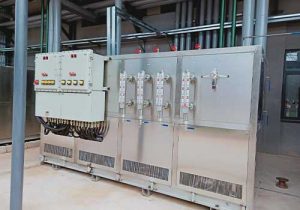thermal chucks
Introduction to Thermal Chucks
Thermal chucks, or hot chucks, are integral to the semiconductor industry, particularly in the areas of wafer probing, characterization, inspection, and failure analysis. These chucks provide precise temperature control, enabling the heating or cooling of semiconductor wafers during various stages of processing and testing.

Definition and Operating Principles
Thermal chucks are defined as devices upon which a semiconductor wafer rests during processing in a semiconductor processing tool. They operate by providing a controlled thermal environment, either heating or cooling the wafer as required for the process. The chuck heater is a device embedded in the chuck that facilitates this temperature control.
Applications of Thermal Chucks
Thermal chucks are used in a variety of applications within the semiconductor industry:
Wafer Probing: They are used to secure and hold wafers during electrical testing, ensuring stable contact for accurate measurements.
Characterization and Inspection: Thermal chucks are essential for characterizing the thermal properties of materials and inspecting wafers under controlled temperature conditions.

Failure Analysis: They are used to simulate high-temperature conditions to identify weaknesses or failures in semiconductor devices.
Process Development and Design: Thermal chucks are used for process development and design verification, ensuring that semiconductor wafers can withstand the thermal stresses of various processes.
Technology and Features
Thermal chucks are engineered with advanced features to meet the demanding requirements of the semiconductor industry:
Temperature Range: They offer a wide range of temperature controls, from as low as -65°C to as high as 400°C, catering to diverse testing and processing needs.
Rapid Heat Up and Cool Down: Modern thermal chucks are designed for rapid temperature changes, which is crucial for efficient testing and processing.
Minimized Expansion: To maintain accuracy, thermal chucks are designed to minimize expansion into the probes, ensuring consistent contact and reducing measurement errors.
Maintaining Planarity: High planarity over temperature changes is essential to prevent wafer warpage, which can affect the quality of the semiconductor devices.

Industry Standards and Innovations
The semiconductor industry has set high standards for thermal chucks, focusing on performance, reliability, and environmental impact:
Temperature Accuracy and Uniformity: Thermal chucks must maintain tight temperature accuracy and uniformity across the wafer surface, typically within ±0.1°C and ±0.5°C respectively.
Surface Flatness and Parallelism: To ensure optimal contact with the wafer, thermal chucks are designed to maintain surface flatness and base parallelism within tight tolerances.
Electrical Isolation: High electrical isolation is required to prevent electrical interference with the wafer, with standards such as >2.5 T Ohm at +25°C.
Innovations in Cooling Technology: Companies like ERS have pioneered air cooling technology for thermal chucks, replacing traditional liquid coolants with cleaner and more reliable air-based systems.
Conclusion
Thermal chucks are indispensable in the semiconductor industry, providing precise temperature control for a variety of applications. As technology advances, thermal chucks continue to evolve, with innovations in cooling methods and temperature management systems. These advancements ensure that thermal chucks meet the rigorous demands of the industry, contributing to the development of high-quality semiconductor devices.
Related recommendations
process chiller systems
320Types of Process Chiller SystemsProcess chillers are classified based on their cooling method, portability, and capacity, each suited to different operational needs: Air-Cooled Process Ch...
View details60 ton air cooled chiller
645Understanding 60 Ton Air-Cooled Chillers: Features, Applications, and Efficiency Introduction to 60 Ton Air-Cooled Chillers A 60-ton air-cooled chiller is a substantial piece of industrial e...
View detailsRefrigeration Principle, Accessories and Application of Chiller
1161Refrigeration Principle, Accessories and Application of Chiller The industrial chiller operation system is composed of four basic components: compressor, evaporator, condenser and expansion ...
View detailsrecirculating bath
342A recirculating bath is a sophisticated piece of equipment that plays a vital role in various scientific and industrial applications. At its core, a recirculating bath is a system that continuousl...
View details
 LNEYA Chiller
LNEYA Chiller






HelloPlease log in